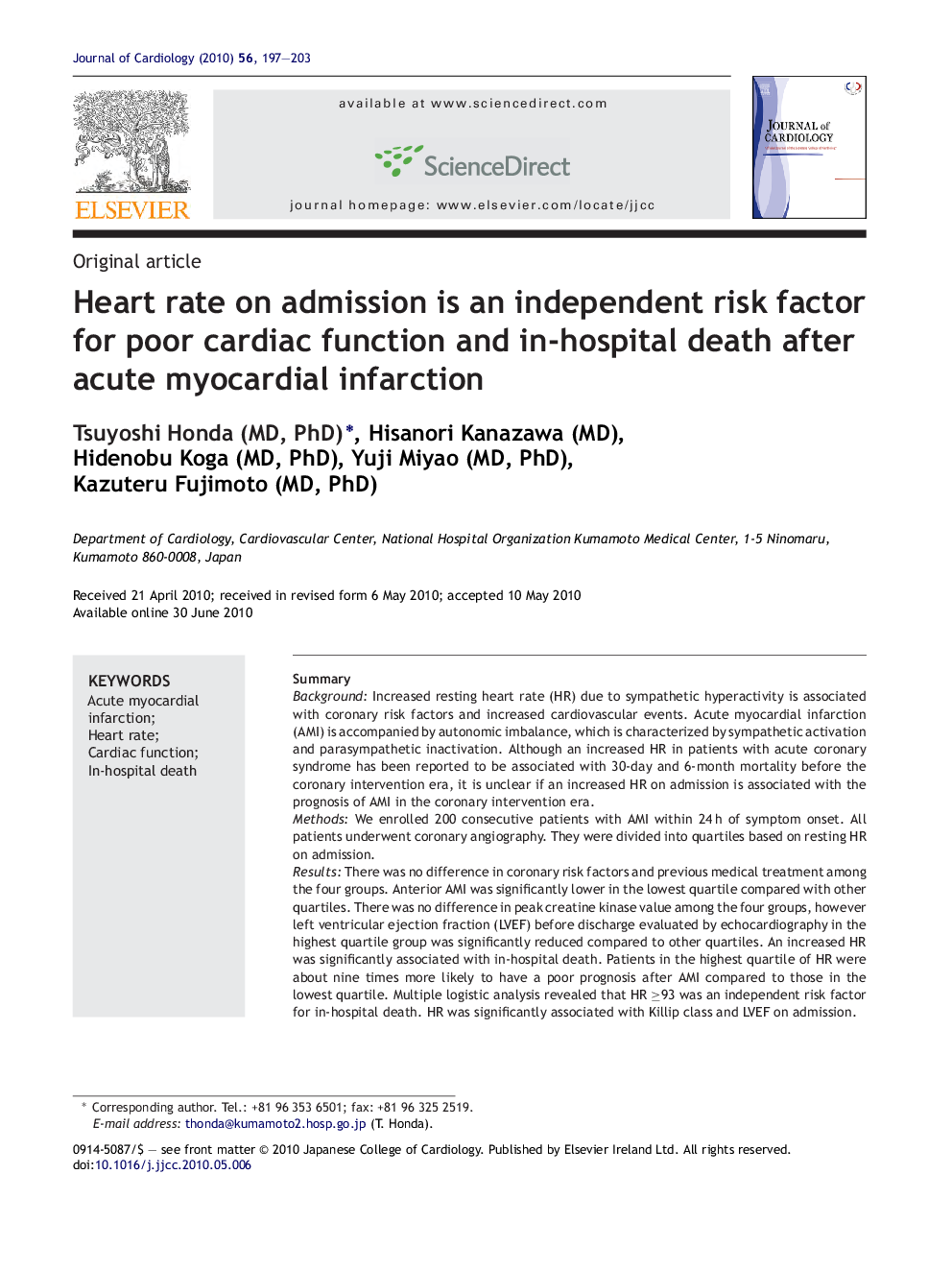| Article ID | Journal | Published Year | Pages | File Type |
|---|---|---|---|---|
| 2963435 | Journal of Cardiology | 2010 | 7 Pages |
SummaryBackgroundIncreased resting heart rate (HR) due to sympathetic hyperactivity is associated with coronary risk factors and increased cardiovascular events. Acute myocardial infarction (AMI) is accompanied by autonomic imbalance, which is characterized by sympathetic activation and parasympathetic inactivation. Although an increased HR in patients with acute coronary syndrome has been reported to be associated with 30-day and 6-month mortality before the coronary intervention era, it is unclear if an increased HR on admission is associated with the prognosis of AMI in the coronary intervention era.MethodsWe enrolled 200 consecutive patients with AMI within 24 h of symptom onset. All patients underwent coronary angiography. They were divided into quartiles based on resting HR on admission.ResultsThere was no difference in coronary risk factors and previous medical treatment among the four groups. Anterior AMI was significantly lower in the lowest quartile compared with other quartiles. There was no difference in peak creatine kinase value among the four groups, however left ventricular ejection fraction (LVEF) before discharge evaluated by echocardiography in the highest quartile group was significantly reduced compared to other quartiles. An increased HR was significantly associated with in-hospital death. Patients in the highest quartile of HR were about nine times more likely to have a poor prognosis after AMI compared to those in the lowest quartile. Multiple logistic analysis revealed that HR ≥93 was an independent risk factor for in-hospital death. HR was significantly associated with Killip class and LVEF on admission.ConclusionsThese findings indicate that increased HR on admission predicts for poor cardiac function and in-hospital death after AMI.
